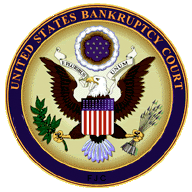 In April 2005, a major bankruptcy system reform known as the Bankruptcy Abuse Prevention and Consumer Protection Act of 2005 was passed. Congress passed this reform and the then President George W. Bush signed it into law. In a number of ways, this reformed bankruptcy including stricter eligibility requirements. Although the aforementioned law was passed in April 2005, it wasn’t until October 2005 that it took full effect. However, there were some changes that became immediately effective after President George Bush signed the legislation in April 2005.
In April 2005, a major bankruptcy system reform known as the Bankruptcy Abuse Prevention and Consumer Protection Act of 2005 was passed. Congress passed this reform and the then President George W. Bush signed it into law. In a number of ways, this reformed bankruptcy including stricter eligibility requirements. Although the aforementioned law was passed in April 2005, it wasn’t until October 2005 that it took full effect. However, there were some changes that became immediately effective after President George Bush signed the legislation in April 2005.
Before the aforementioned law took effect, filers were able to choose the bankruptcy type that was best for them i.e. Chapter 13 (repayment) or Chapter 7 (liquidation). The latter is what most filers chose. However, after the passing of the bankruptcy law of 2005, applicants had to pass a ‘means test’ if they desired to file under chapter 7. Basically, applicants need to meet some eligibility requirements. What are these eligibility requirements? Let’s take a look.
You are allowed to file for bankruptcy under liquidation or chapter 7 if the median income in your state is more than your current monthly income. However, you cannot find under chapter 7 if the median income in your state is lower than what you currently earn each month and you have the ability to pay $100 each month to pay off your debt. If you fall in the preceding category then you need to proceed under Chapter 13 or repayment. A formula that includes your expenses, your monthly income, and the total amount of your debt determines whether you can afford to pay $100 each month.
By filing for bankruptcy, individuals can prevent certain legal actions. However, some of the protections from legal actions for bankruptcy filers were revoked after the bankruptcy law changes in 2005. Therefore, it is important for you to understand the 2005 bankruptcy law changes and find out what legal actions you can prevent by filing for bankruptcy. By doing so, you will save yourself from unnecessary trouble!
 What Makes Me Different From the Others?
What Makes Me Different From the Others?